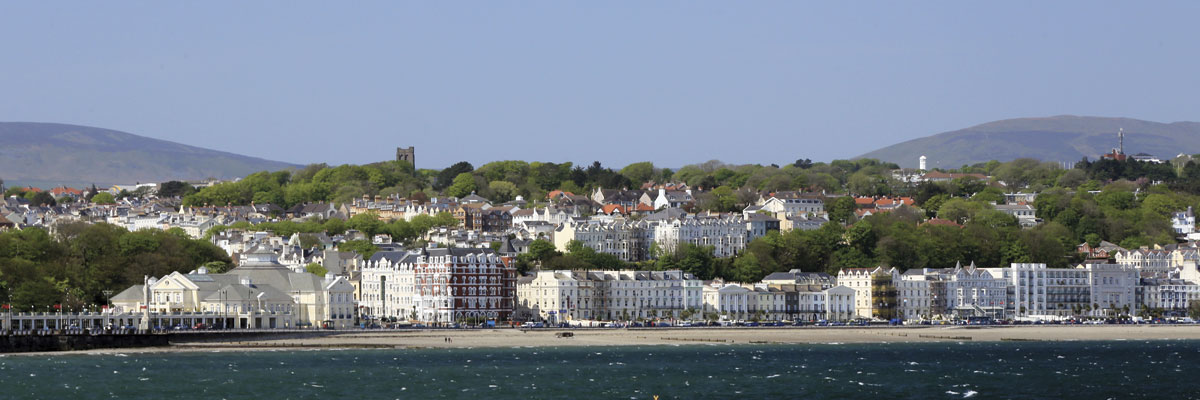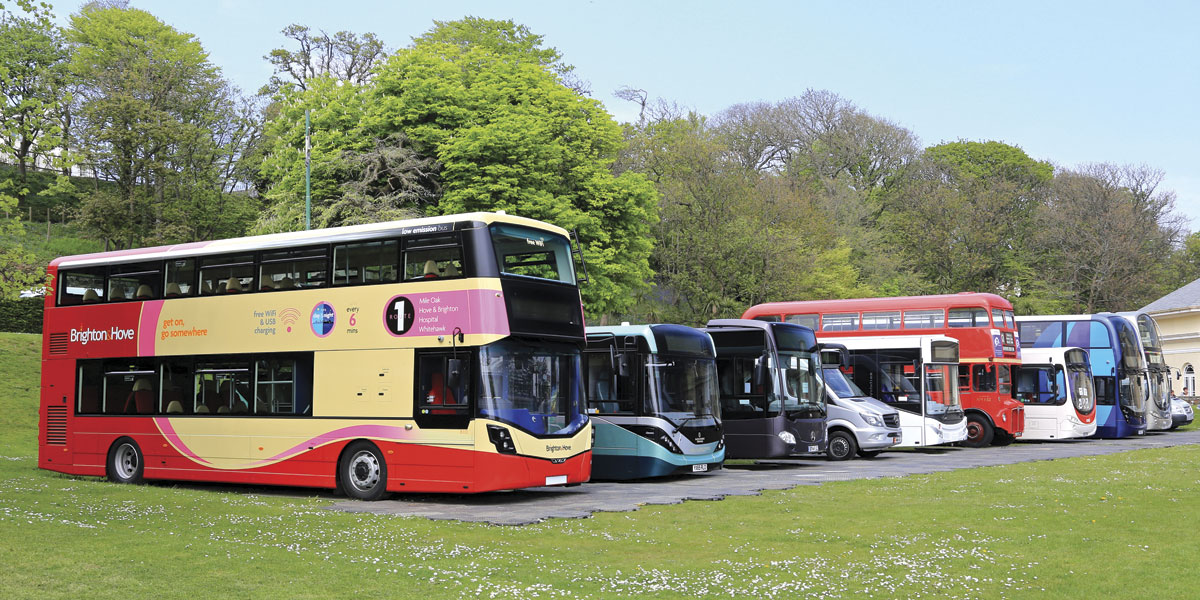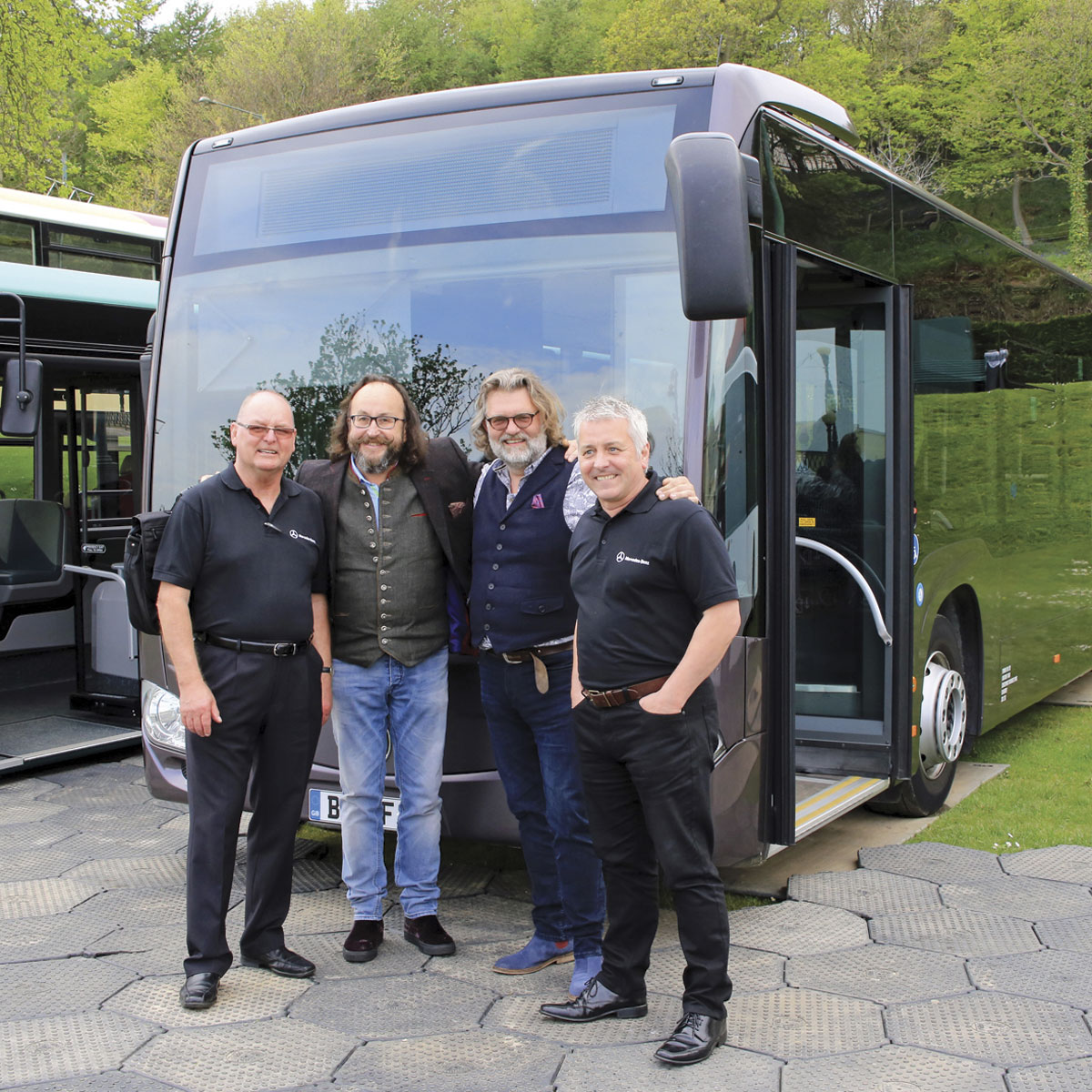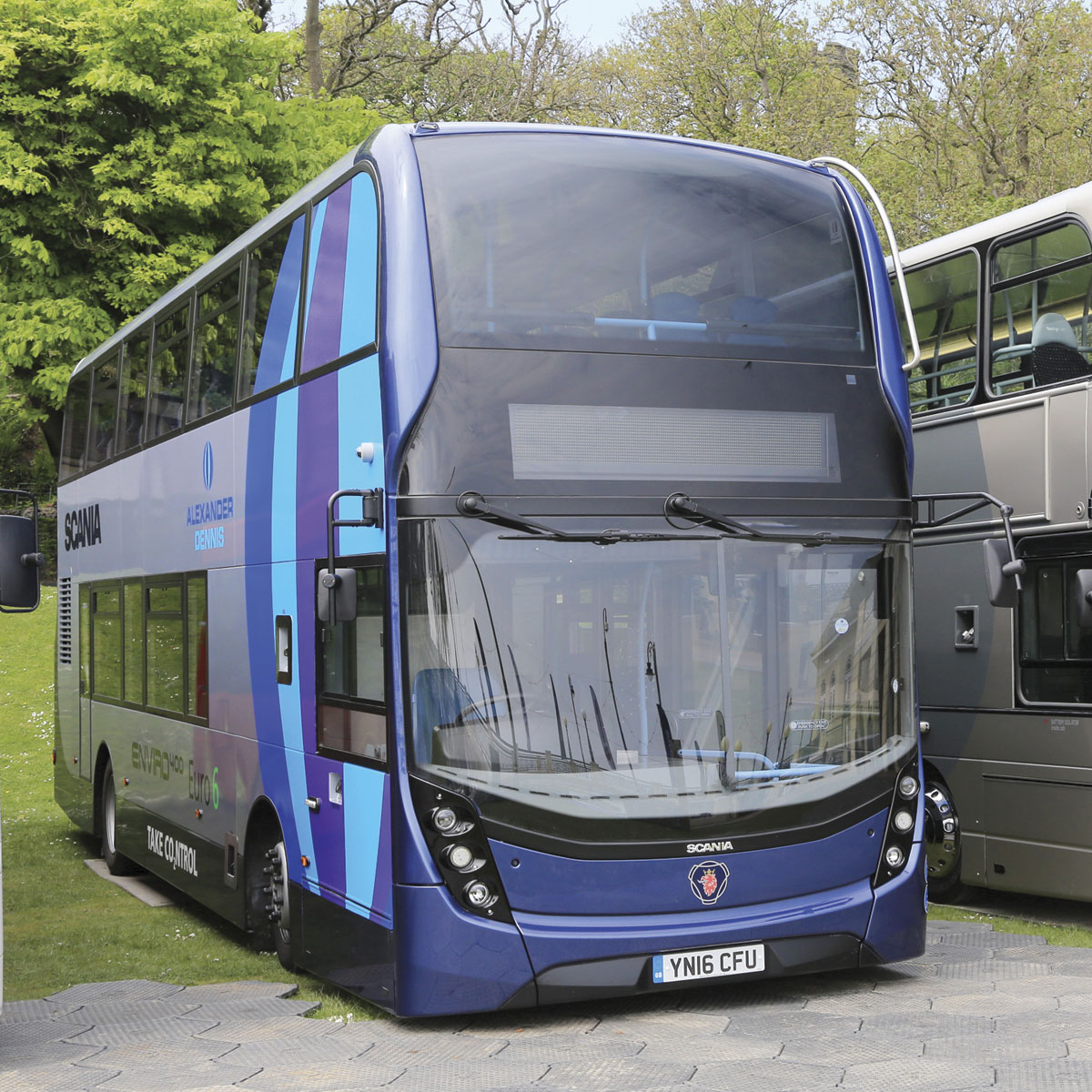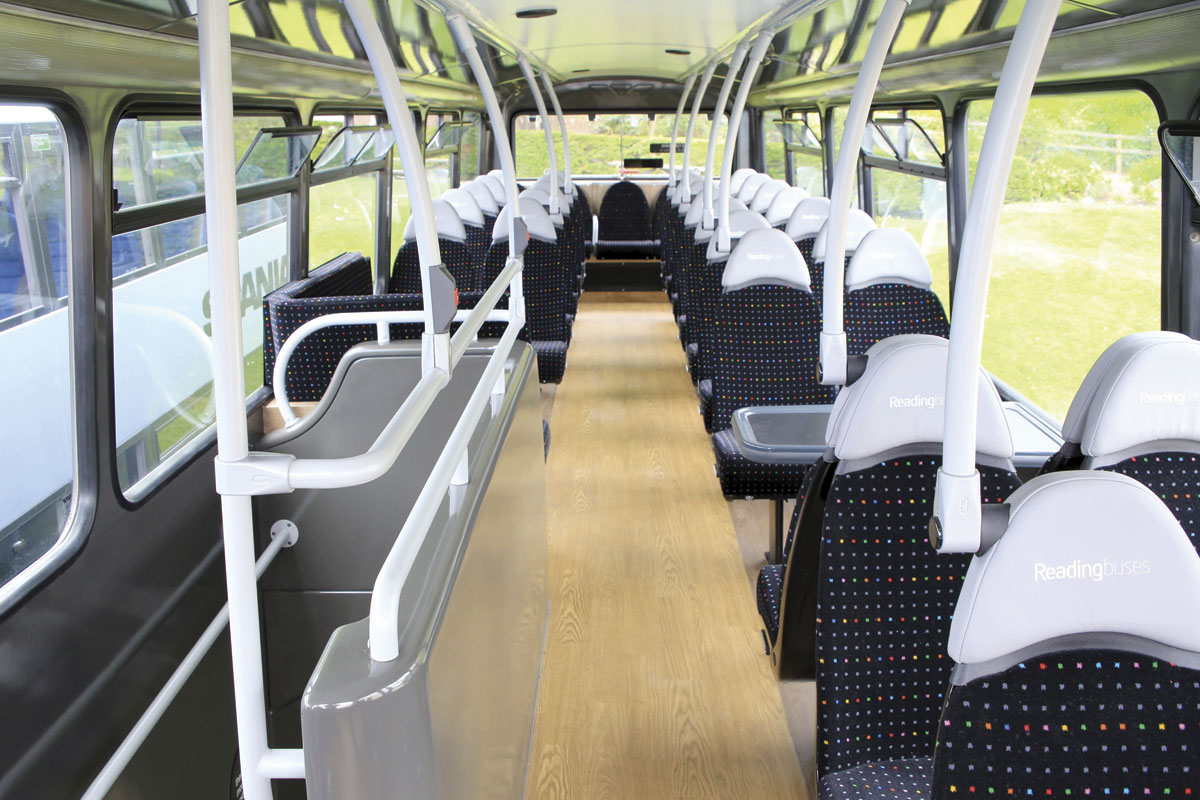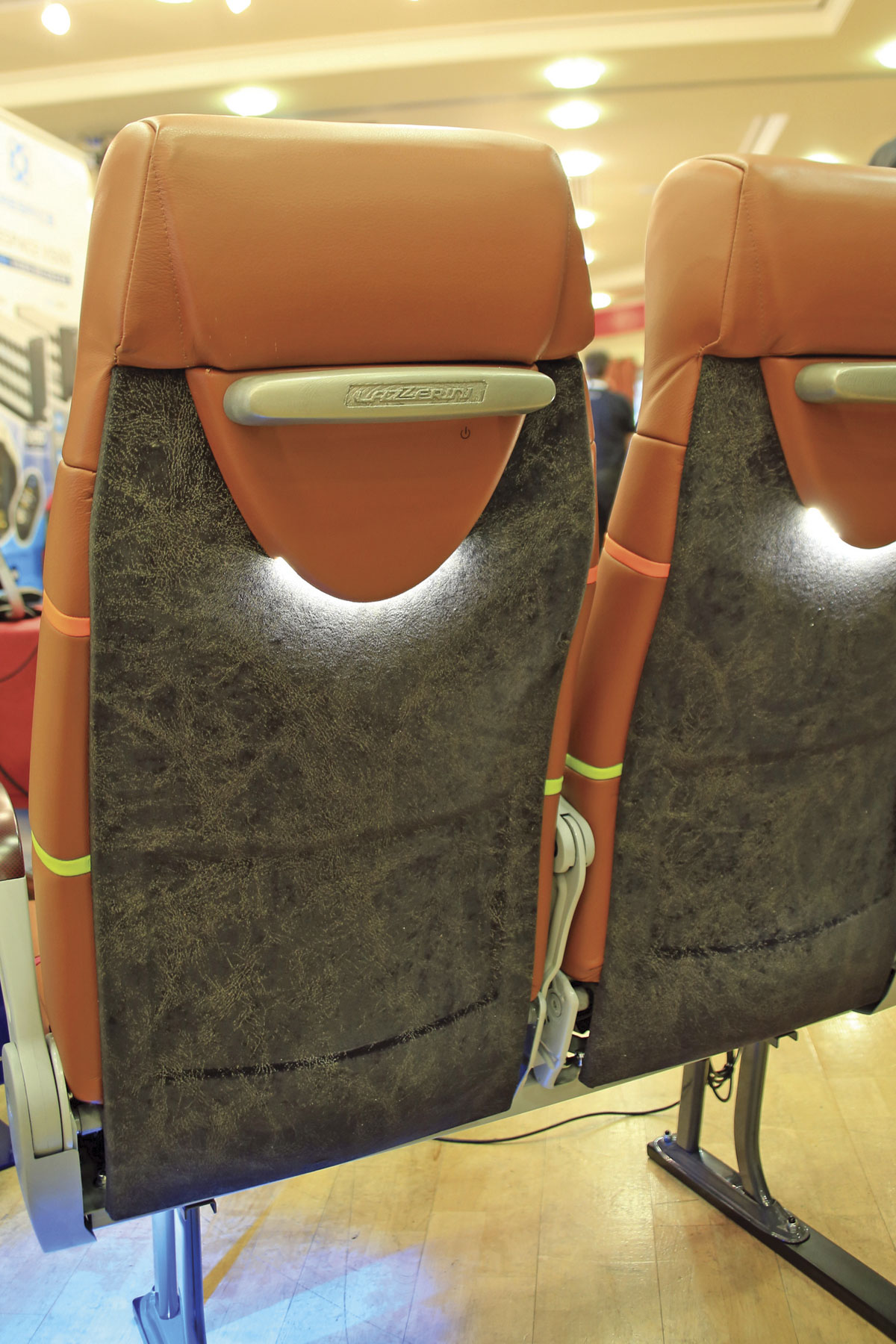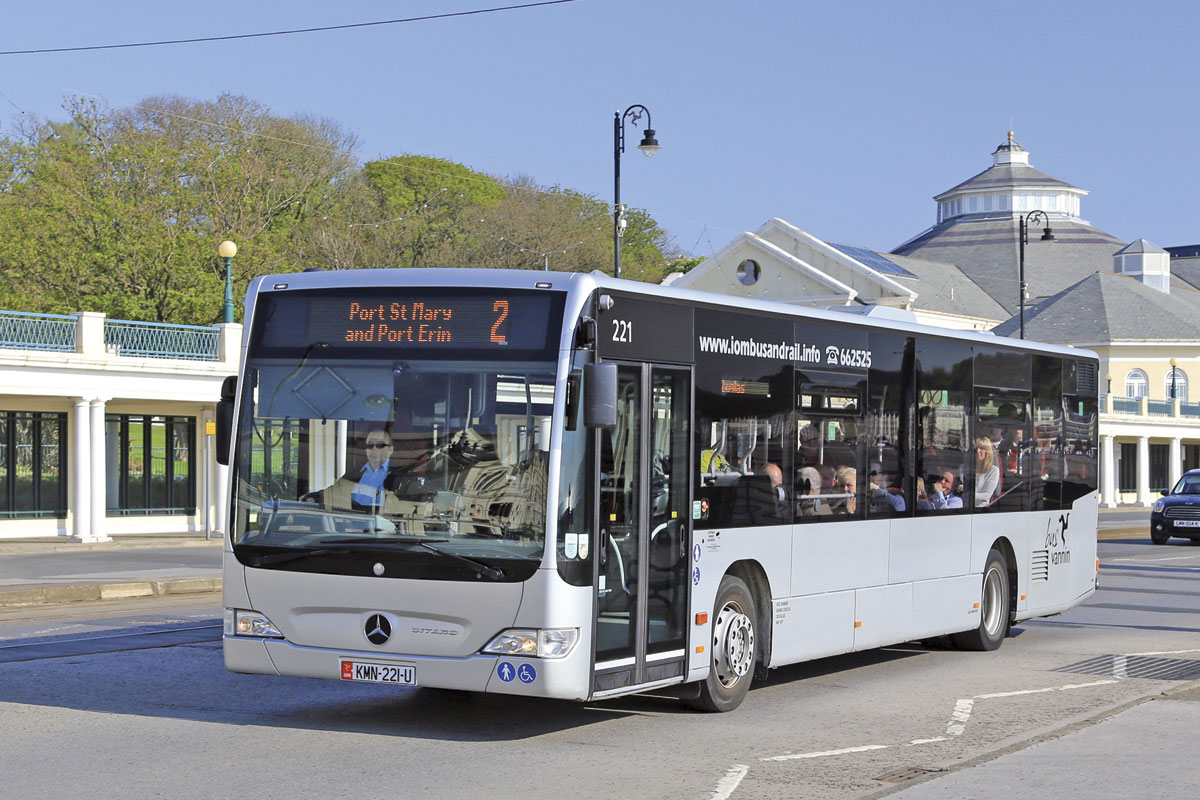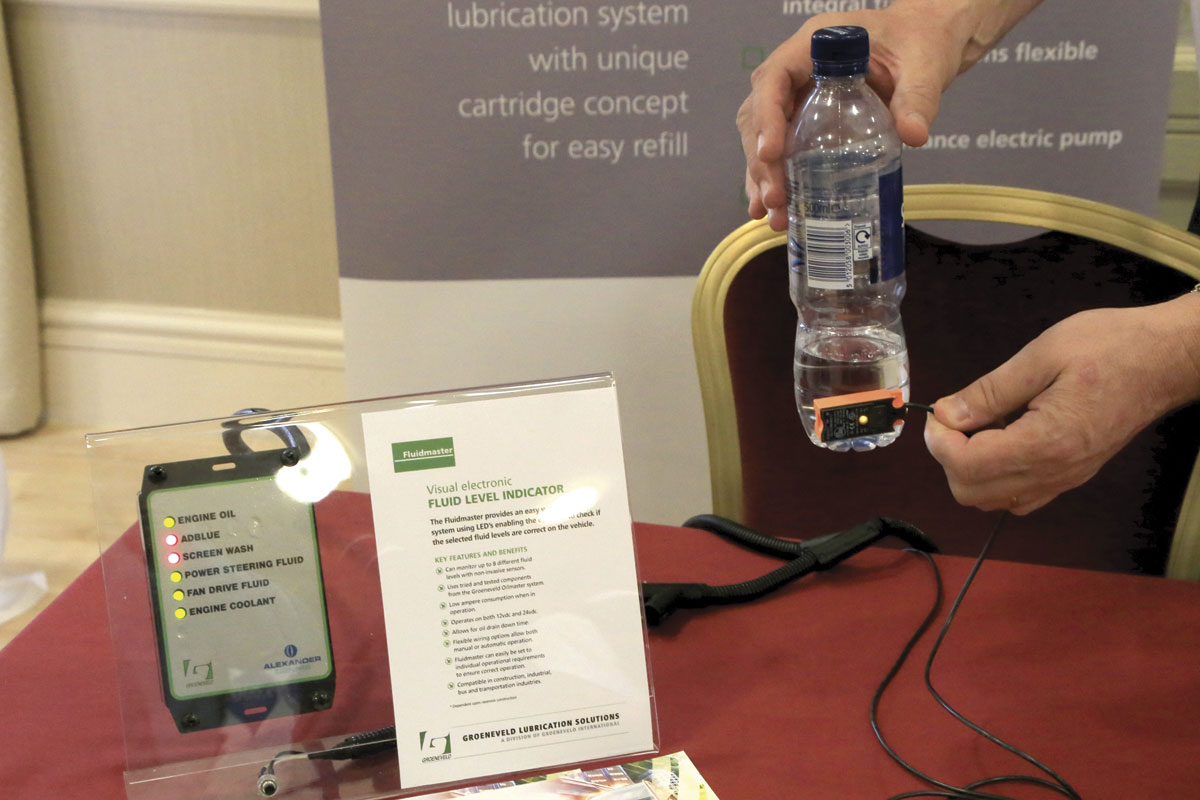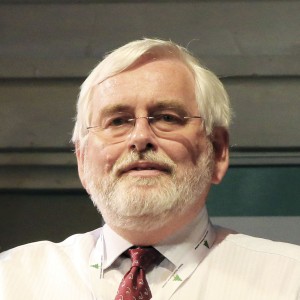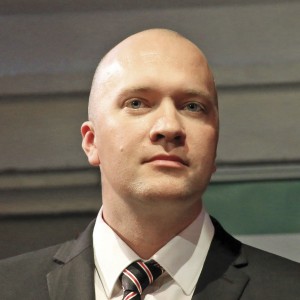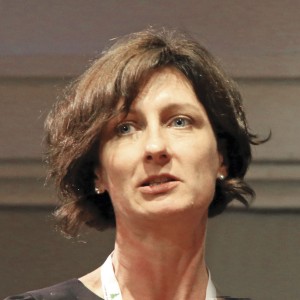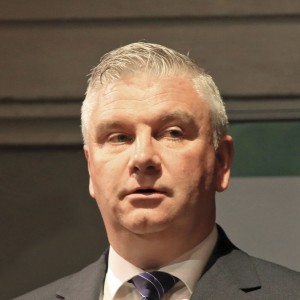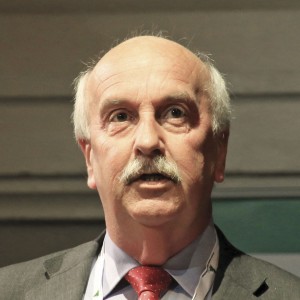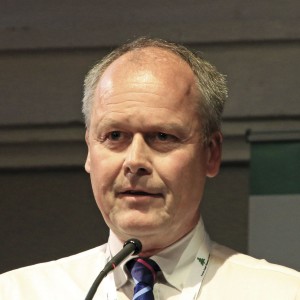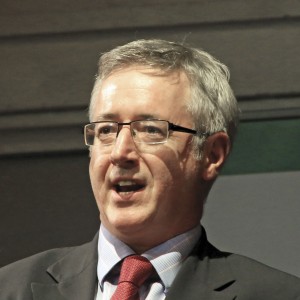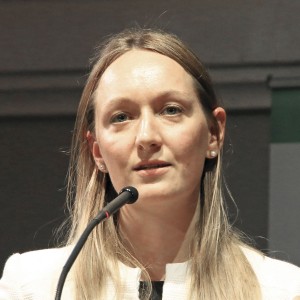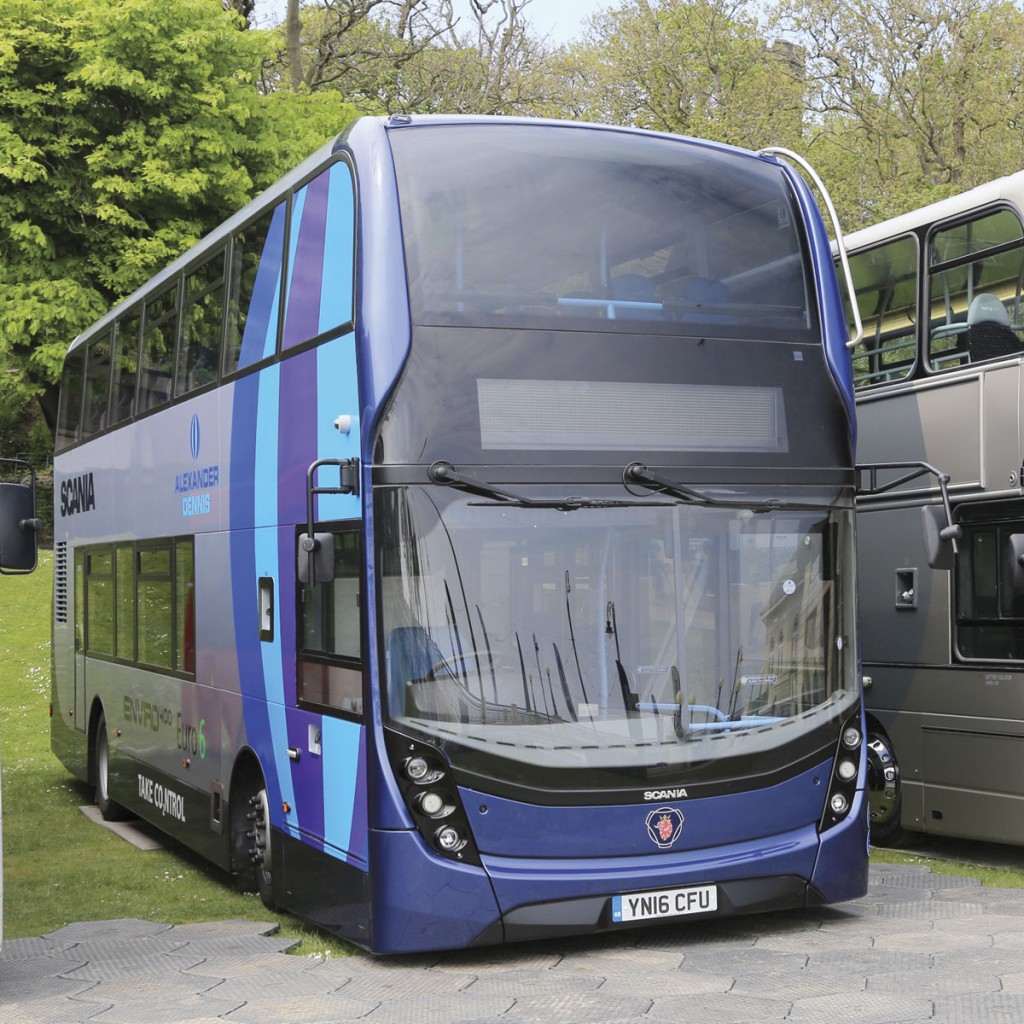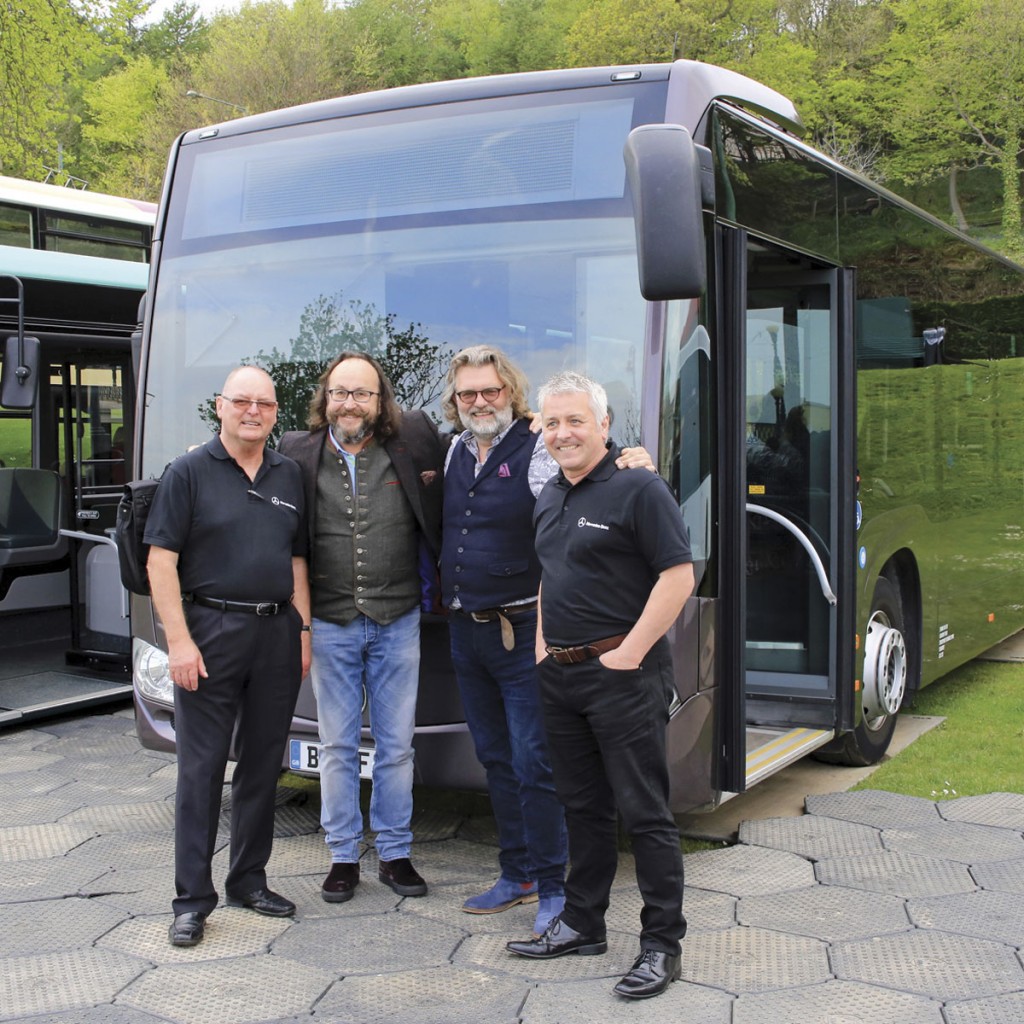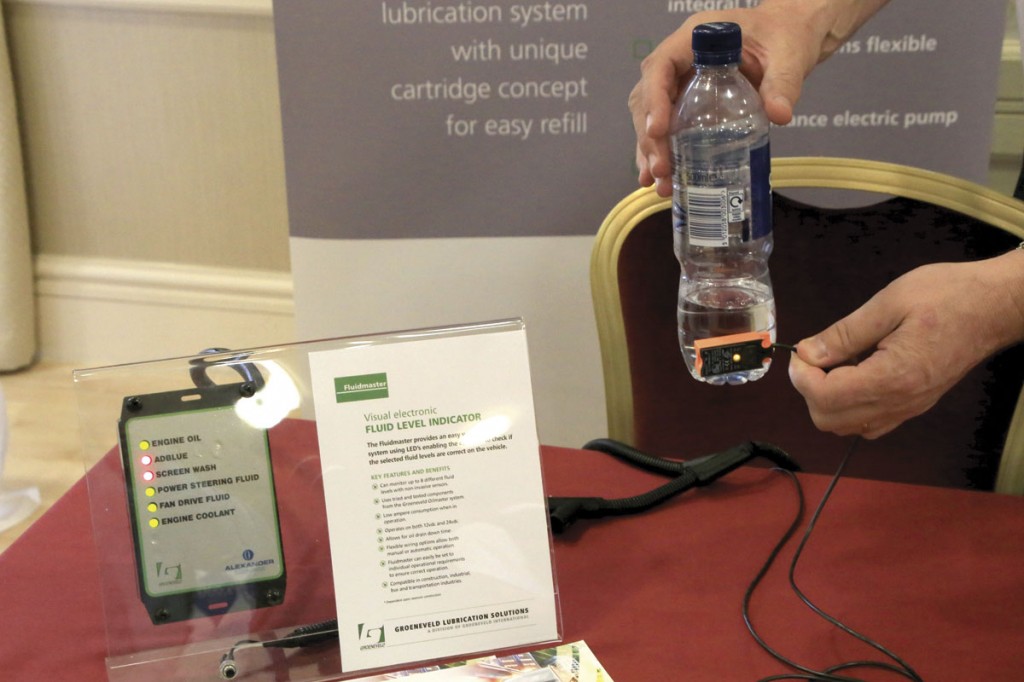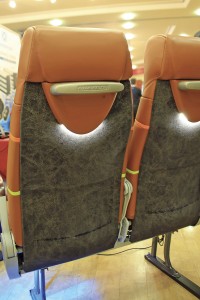ALBUM 2016
A warm welcome and extensive trade support greeted delegates to this year’s ALBUM conference hosted by Isle of Man Transport in Douglas. David Cole was there and found much of interest inside and outside the conference venue
It was purely coincidence that just six weeks before the EU referendum, the 2016 ALBUM conference was held outside of the EU on the Isle of Man, planning for it having commenced well in advance of the 2015 election which initiated the referendum process.
The self governing Crown Dependency does not form part of the United Kingdom and has therefore never been part of the EU. It is also unaffected by the other key uncertainty facing many delegates at the event, the proposed new legislation on buses which could lead to differing regulation models across the UK. On the island, bus services and a variety of heritage railway operations are provided exclusively by the host organisation which is directly owned by the Isle of Man Government.
Villa Marina, an entertainment complex on Douglas Promenade provided the venue, convenient for all the town’s facilities and linked to hotels along the seafront by a choice of two contrasting modes of transport, modern Isle of Man Transport buses or historic horse drawn trams. Once again, BBC Northwest Tonight Chief Reporter Dave Guest hosted the event in exemplary fashion.

The ALBUM Conference was held at Villa Marina, the building to the left in this panorama of Douglas seafront
Welcome
Ian Longworth, Director of Public Transport for the Isle of Man welcomed delegates with a brief overview of the island’s history, governance and public transport system. He pointed out some of the pitfalls visitors could experience such as referring to the UK as the mainland and reminding delegates that he was also responsible for the island’s fire engines, ambulances and aircraft steps in addition to the fleet of 70 modern buses and four rail based heritage operations.
Ian’s programme had foreseen three keynote presentations on alternative regulation models but at the last minute TfL’s Leon Daniels was summoned to see London’s new Mayor so some rearrangement to the programme ensued, only to be further disrupted by delays to speakers’ flights from the UK. Yet it all seemed to run seamlessly!
Mark Savelli
Business Advisor for KMB, Hong Kong (HK)
Mark delivered the first day’s keynote presentation on alternative regulation models looking at entrepreneurial space in the HK franchising environment. In HK, the ‘user pays’ principle applies and there are no subsidies to the private bus companies who normally have ten year franchises. The onus of initiative for any route changes is with the operator although Government approval is required, the latter also sets minimum service level requirements. The fixed fare is low but, although there is a mechanism to increase this, most operators in HK have not raised fares in many years. Despite this, bus companies earn a good return on capital employed with any excess above a 9.7% return required to be shared with customers.
Comparing the situation with the UK, Mark said ‘we do not have the same freedoms as you have in the UK outside of London but we have many more levers that can be pressed compared with London.’ He suggested that all three models (HK, UK outside London and London) could deliver high levels of satisfaction and cited trust in entrepreneurial flair, the quantum of subsidy available and the manner of organising any service elements that were socially necessary as being the key factors.
Comparing the London style gross cross contract model versus the HK model, he noted that the public’s expectation of the Government’s powers over bus services were well managed such that the bus rarely became a political issue.
The bus holds 48% of HK’s public transport market at around 6m journeys daily, it is the mode of choice for many due to the likely availability of a seat compared to rail based systems. Congestion due to increasing car ownership is an ongoing challenge so best practice scheduling has been introduced, making use of the entrepreneurial space available in the contract.
In one of several examples of attention given to the local market, Marc recalled ‘We surgically removed around 8% of mileage from the schedules over a period of two years and that was achieved without losing any passengers, in fact we began to show passenger growth having removed the deadwood mileage. The passengers per mile metric increased by around 10%. In one case, we took a service where six buses an hour were being run erratically and rescheduled it with five buses an hour run much more reliably. We showed our customers that less can be more and they responded well to the improved reliability.’
In conclusion Mark confirmed his view that, ‘the bus sector is a natural entrepreneurial space in a city’s economy, the evidence is that a high degree of such space works well for all stakeholders. We are essentially a very adaptable and competitive industry.’
Ashley Brooks
OEM Account Manager, Allison Transmission
Under the title Real Changes, Real Fuel Savings, Ashley introduced the results of trials with its latest xFE range. The new units have the same space claim and maximum torque ratings as the equivalent Torqmatic® models but offer torque converter lock up at lower speeds through revised gear ratios and fuel savings of around 7%.
Tests of the unit have been carried out across the world, the UK test featuring an ADL Enviro 200 from the Nottingham City Transport fleet for which 12 months of fuel usage data on its regular route was available. The vehicle was retrofitted with a T3280 xFETM unit and returned to service on the same route. After eight months, the vehicle was further upgraded with the FuelSense® electronic control package with a result that fuel usage is currently showing an 8% reduction allowing the vehicle to run an extra 2000 miles per annum on the same amount of fuel.
The xFE range can be retrofitted in as little as one day to vehicles with existing Allison units and can be used in other vehicles subject to adaptive material being available.
Julie Williams
Chief Executive Officer of Traveline
It was not surprising that Julie demonstrated how the organisation’s systems could support planning her journey to the Isle of Man (as far as Liverpool!), however in practice she chose the other mode of transport for which the island is famous, arriving by motorbike.
A new Traveline Information Ltd (TIL) board was established around two and a half years ago to promote public transport passenger growth and enable the delivery of high quality mobility information. Since 2000, regional Traveline organisations in England together with those for Scotland and Wales have been developing mobility information systems although several of the English organisations are now closing their websites and moving to a data maintenance role.
TIL has introduced a range of services including the Traveline GB website, apps for in journey tracking, a website for open data users, a single Traveline call centre for England, a journey planning widget and a data services organisation. Projects currently in hand include the sourcing of data directly from operators, data format conversion and disruption messaging, the latter in conjunction with digital systems company Base.
Traveline GB is funded by operators for 2016/7 with 81% of the cost already committed by the main groups based on call costs previously borne. Julie asked ALBUM members to consider how the remaining cost, £185,000 should be shared between non aligned operators.
Mark Freymueller
Head of Sales and Marketing, Mercedes-Benz Minibus GmbH
With the aid of case studies, Mark proposed the benefits that accessible minibuses could provide to operators in both urban and rural environments. His focus was on the Sprinter City 45, the only fully Mercedes-Benz low floor minibus available in right hand drive form, referring to the recent Stagecoach order for 30 and Isle of Man Transport’s experience with five vehicles delivered in 2015.
Where ‘big buses are transporting air,’ Mark described the Sprinter City as ‘an opportunity to optimise your business for the benefit of the customer.’ He extolled the factory converted Sprinter benefits including a full bumper to bumper Mercedes-Benz warranty and lower fuel consumption, reporting that UK operators are seeing up to 25% less fuel used compared with the published figures for the Sprinter. Audience members were keen to hear when alternative fuel options would be available with Mark advising that this depends on when such systems are introduced to the van production line.
Mark Oliver
Bus and Coach General Manager, Fleet Sales and Key Account Manager Johanna Lind, Scania
Taking environmental and emission control challenges as a background, Mark and Johanna presented Scania’s approach to working with operators to provide Total Operating Economy (TOE). This featured their modular approach to both vehicles, where technology is matched to the environment that the vehicle will be working in, and the services provided after sale in support of the vision of increased up time in the future.
Scania’s Fleet Care concept (SFC) was presented with an analogy to a formula one team, the important factor being choosing the opportune moment to undertake maintenance or replacement work. In this area, operators’ engineering teams are supported by Scania’s own fleet manager whose competence could provide early identification of when support is required.
Mark referred to two areas in which significant guidance could be provided by the manufacturer, environmentally friendly driving training specific to the vehicle and how to react to the appearance of a warning light to minimise the possibility of failure.
David Martin
Former Chief Executive of Arriva
In the conference’s second keynote presentation on alternative forms of regulation, David gave a brief overview of his Arriva background before looking at how the company had maximised the opportunities from a variety of alternative regulatory regimes.
In addition to the deregulated market and net or gross contact contracts, Arriva also operated in environments of fixed subsidy, fixed profit margins and controlled fares with the intensive deployment of capital or the use of assets provided. One constant factor noted was that fare levels were controlled with the exception of the UK outside of London.
With regulated environments such as London and some parts of Europe, open market tendering provided the local authority with initial savings of around 20-30% although many have no revenue incentives on the operator and the client organisations can be slow to react to commercial changes. In Budapest, Arriva has had positive experiences with two eight year contracts requiring 150 buses although the concentration of new vehicles on one corridor did provoke negative feedback leading to them being dispersed.
In the Czech Republic, fixed (low) profit margin contracts were managed by creating a sub-contractor structure to create acceptable returns whilst David noted that in some multi-modal 24/7 contracts in The Netherlands, the price only counted for 20% of the scoring in the tender award process. Referring to Malta as an ‘absolutely unmitigated disaster,’ he drew many learning points from it which are now talked about openly with new customers to highlight potential pitfalls.
Turning to the deregulated market, David referred to the apparent success of the long distance market liberalisation although at a significant start up cost and with the prospect of ongoing losses in early years. Approaches to the market have been innovative whilst through regulation and licensing of operators, expansion has not been at the cost of safety and reliability. Opportunities in the UK have seen the introduction of higher quality Sapphire and Max services in pursuit of customer growth and participation in the forthcoming Merseyside Bus Alliance. In Eastern Europe, he referred not only to difficulties with deregulation in Romania where much of the market has become dominated by minibus owner-drivers but also to the significant progress made elsewhere in multi-operator ticketing.
Having looked at the various regulatory mechanisms, David summed up his presentation with, ‘my conclusion is that there is no single solution, there are no particular winners or losers. From our (Arriva’s) viewpoint, whether it is regulated or deregulated, it is a workable entity but growth in patronage and revenue will only happen through meaningful partnerships. As to the Buses Bill, I think it gives welcome attention to the industry. What comes out of it, I hope, will be a pragmatic approach that really is just a facilitator for things if things go wrong.’
Keith Watson
Director for Customer Development, Alexander Dennis
Collaboration was the theme for Keith with a presentation looking at how customer input had shaped the company’s latest Enviro 200 and 400 models. The company wanted to put themselves in the customers’ shoes and also ensure they understood what the younger generation of passengers required. A series of reliability, maintainability and value (RMV) workshops started back in 2009.
Amongst the detailed outputs of the collaboration process are the timed cleaners’ light switch to avoid battery drain, a removable fuel tank choke to limit filling and hence weight when full capacity is not immediately needed, the inclusion of the Groeneveld Fluidmaster to monitor fluid levels, quick release glazing and engine stop-start to cut excessive idling.
With the need to compete against other modes, Keith extolled the benefits of collaboration in delivering products to meet customer needs and grow their business saying, ‘we can do more better together.’
Ian Downie
MD Sales and Custom Care, Wrightbus,
Marking 70 years since the company’s formation, Ian looked back over its growth and the role of reflection on its past activities to drive the business forward. He focussed on the company’s recent developments including the SRM and open top vehicles in conjunction with Volvo together with the 1000kg weight reduction applied to the Streetdeck to meet Low Carbon Bus requirements.
Collaboration with Queens University, Belfast was a key component of the company’s strategy to integrate new materials, fabrics and structure into its designs. Seven Wrightbus staff are based at the University with access to 30 renowned academics. Some very impressive emission reduction figures were displayed claiming that the Euro6 product produced around an eighth of the PM and NOx levels of the equivalent Euro5 model.
He expressed a concern that the industry still has some image problems with the outside world, citing references to the bus as a box on wheels using truck components and being poor on fuel efficiency and emissions. His presentation answered these points in turn, making reference to the development of hybrid and micro hybrid vehicles where the bus industry is taking the lead. He confirmed that Wrighbus were working on electric vehicles beyond those successfully operating in Milton Keynes and preparing for gas powered options, noting the recent launch by Mercedes-Benz of a gas engine for passenger vehicle use.
Nicola Moir
Project Manager – Contactless Transit Project, UK Cards Association
With the growing use of contactless payments on public transport, Nicola’s timely presentation looked at their way forward in the industry given the ‘big five’s’ commitment. Although contactless use has featured in London since 2012, the presentation timeline looked to 2025 before contactless could be an option on most journeys in the UK. In London, it now accounts for 30% of PAYG fares representing 9% of all UK contactless transactions.
Key to implementing contactless are the risk and reliability agreements between card issuers and transport operators, transaction processes and implementation guidelines including staff communication and minimising card clash messaging. Contactless payments use customers’ existing cards so there is a cost benefit, figures given from TfL suggest 6p in the pound versus 16p for Oyster.
The pathway to full contactless recognises three stages. Initially single PAYG fares, through aggregation up to £30 on a daily or weekly capped basis to the vision of account based pre-purchase models. Where staged fares are offered, there will be a need to tap in/tap out so communication of the tap out need with customers will be crucial. To enable the progress beyond the single operator single PAYG fare, a UK wide back office ‘broker’ is proposed for establishment around 2020.
Adrian Felton
City Bus Project Manager, Volvo Bus
Adrian focussed on the company’s commitment to electromobility to conclude the presentation sessions. Accepting that there is ‘still a place today for clean environmentally friendly Euro6 vehicles,’ he promoted the benefits of electrification above other forms of alternative fuels, claiming that it would be significantly more efficient to produce electricity from biogas than use the latter directly in vehicles. The presentation covered Volvo’s strategy on City Mobility that was reported on in detail in last week’s Bus and Coach Buyer (1378 – 13 May 2016). Adrian concluded with, ‘Volvo is ready for the challenge, we have an industry responsibility.’
In addition, ALBUM Chairman, Ben Coulson, together with Bill Hiron gave a presentation on a potential programme and content for the Buses Bill, advising members of the most effective time to lobby their local MPs to ensure the needs of SMEs are taken into account.
Trade and vehicles
ALBUM 2016 enjoyed excellent support from the trade with over 40 organisations taking space in one of the two exhibition halls within the Villa Marina complex or displaying a vehicle on the lawns outside. The organisers had taken great care to ensure that temporary matting was placed to protect the grass and allow easy access in the event of inclement weather for both vehicles and visitors. With a packed programme and busy stands, there just wasn’t time to talk to every one there but further information on what was shown should be available on all the companies’ websites.
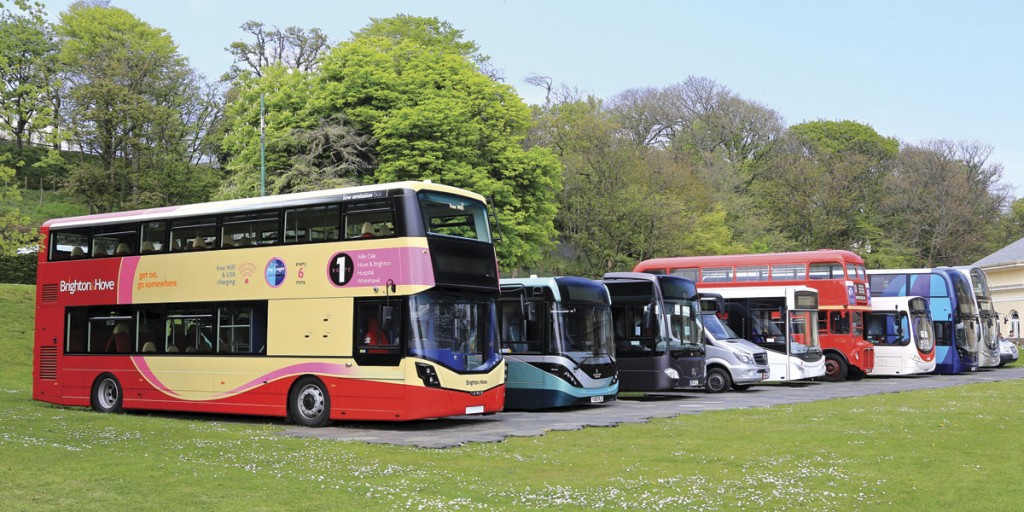
The vehicle display in the grounds of Villa Marina with the low height Wrightbus Streetdeck for Brighton and Hove prominent
Looking initially at the outside displays, Wrightbus showed a two door low height Streetdeck for Go Ahead Group’s Brighton and Hove operation. The low height body structure initially used by the group’s Oxford subsidiary due to low bridges helps bring the weight of the vehicle to below 10.7tonnes and support its accreditation as a low emission bus. Intended for intensive operation on Brighton and Hove’s six minute frequency ‘1’ service, a second doorway and standee area with six tip up seats has been provided to speed passenger flow. The wi-fi enabled interior is boldly finished with bright red moquette trimmed seats and blue mouldings.
Alexander Dennis’s own exhibit was the Enviro 200 MMC demonstrator seen at Coach and Bus Live 2015 with the company also responsible for the bodywork on Scania’s exhibit. This was the first public appearance of Scania’s latest Euro6 double deck chassis powered by the 9.3litre DC09 111 engine offering 250hp coupled to ZF’s Ecolife gearbox. The 10.9m vehicle has a standard design capacity of 78 and was trialled by Isle of Man Transport before and after the conference to shuttle delegates to and from the airport. Scania also advised that the gas version would be ready before Euro Bus Expo and announced a demonstration example of the revised Irizar i3 bodied low entrance Euro6 single decker would be available early in the summer. This has taken into account feedback on the ramped floor of the initial design and features a flatter floor with a step midway along the gangway.
EvoBus displayed two vehicles, their 2014 Citaro demonstrator and one of the latest batch of Sprinter City 45s to be delivered to Isle of Man Transport. This has a wide entrance with outward opening doors leading to a low floor area offering a wheelchair space and up to four tip up seats. The normal floor height area beyond provides seating for 13 passengers.
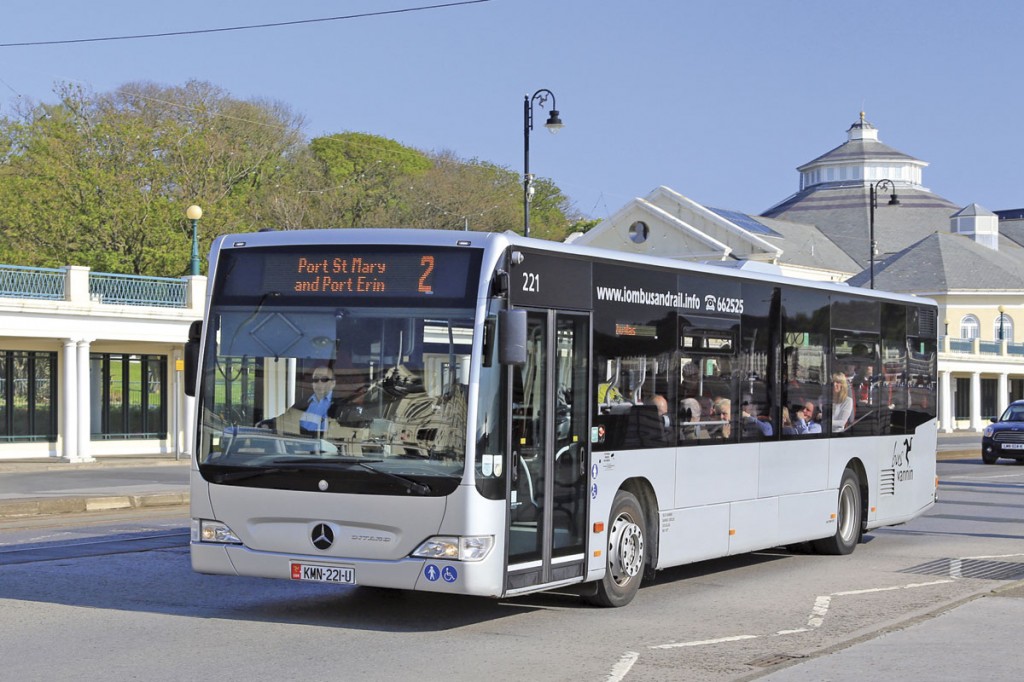
Isle of Man Transport’s modern fleet includes 30 Mercedes-Benz Citaros, this one is on Douglas Promenade outside Villa Marina, the conference venue
Alongside a stock B8RLE Euro6 with MCV bodywork and Magna seats, Volvo had one of its Frontline Service vans available for inspection. The latter was supplied by Thomas Hardie Commercials Ltd, Volvo’s partner in the north west which has responsibility for the Isle of Man.
The vehicle display was completed by Omnibus’ Routemaster and two fully refurbished vehicles. A Rossendale Transport 2003 Volvo B7RLE with WrightBus bodywork, originally in the fleet of Minsterley Motors, displayed the combined efforts of Read Commercials and Lancashire Trim to update, retrim and repaint in the latest Rosso livery. The vehicle is also to receive an SCR emission reduction system.
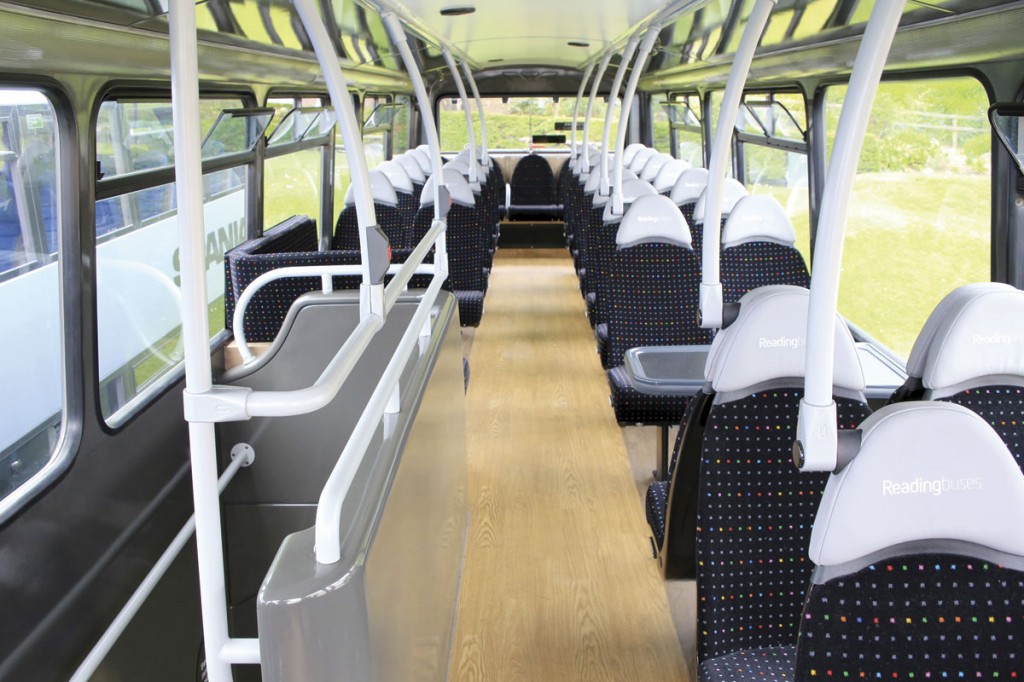
Upper deck interior of the Wright Gemini double decker refurbished by Bus and Coach World for Reading Buses
Bus and Coach World brought across a DAF Wrightbus Gemini refurbished for Reading Buses. A former London vehicle converted to single door, the interior was particularly tastefully refinished and included some of the popular features recently introduced by the operator including a corner lounge area and a table on the upper deck. The vehicle’s advertising panels were devoted to naming the suppliers who had made the refurbishment possible, many of them being present at ALBUM.
Moving into the halls, Allison Transmission Europe occupied the prime spot opposite the doorway of the upper floor Colonnade Suite. Centre stage was the xFE range featured in the company’s conference presentation.
Voith Turbo promoted their ‘More Air’ range of compressors for retrofit applications together with their DIWA transmission efficiency package.
Central to Parkeon’s display was the Wayfarer 6 next generation driver console that supports all contactless standards and is future proofed whilst still being backward compatible with the Wayfarer 200 system. Parkeon were also promoting their CloudFare® platform supporting operators moving on to contactless, mobile and smart device payment systems.
The Omnibus Routemaster raised the company’s profile across the island whilst its stand showcased further enhancements of the myDAS Touch app launched at Coach and Bus Live 2015. myDAS Touch is an integral part of the OmniDAS driver self-service myDAS module that links drivers directly with the OmniDAS depot allocation system.
After an extensive development process, Camira are now able to offer a printed moquette with the same five year warranty as normal woven moquette. Any digital image can be printed onto white loom state moquette, the process ensuring it is printed to the full pile thickness of the material. Advertisers and operators are now being sought to work with the product.
E P Morris & Company featured a number of developments to its extensive systems portfolio including the option to take GPS mileage data directly from telematics systems for use in applications such as BSOG returns and fuel efficiency calculations. Display screens showed a driver risk management system supporting the identification of accident blackspots and driver retraining requirements.
Groeneveld demonstrated Fluidmaster, the eight channel fluid level indicator that has been adopted by ADL. Non invasive sensors, bonded to the side of plastic or nylon tanks at the top up required level, transmit a signal to a display unit, providing a continuous update on safe levels with minimal effort.
Designed to take urban and interurban travel to a new level, Lazzerini showed a range of new options for its lightweight high backed seats. The Practico was shown with headrests and detail in a metallic effect vinyl material to create a distinctive look whilst the leather trimmed Transito showed the option for integrated reading lights and underseat lighting to encourage the maintenance of a clean floor area.
There was no missing Navaho Technologies’ stand with its bright digital signage showing the real time information displays developed for TfL using ‘Countdown’ data and its own GPS system. In trial on London Route 12, the system provides live updates of arrival times at stops together with local information and live connection opportunities.
Suppliers of Wi-Fi to Isle of Man Transport, Icomera UK demonstrated their competence in providing the ‘connected bus’, working together with other suppliers.
With nearly half of all UK transactions still being cash, Scan Coin engaged delegates attention on the need for software upgrades to support forthcoming changes to the pound coin and £5 note. This will be done automatically for those holding a maintenance contract for its machines. The company’s products are tested with the Bank of England to accurately recognise legal currency.
McKenna Brothers showed their new 20mm deep Ultima next stop sign which is also suitable for bus stop and coach applications. The unit has the choice of white or amber LEDs together with multiple mounting options and the ability to be messaged using a blue tooth connection. It complements the full Ultima range. The company has supplied audio and visual next stop announcement systems across the Isle of Man Transport fleet.
Aunde group company Isringhausen is a major supplier of OEM seating to the UK market with the Isri brand applied to previously Esteban products. Further development of the Civic range including USB connection options was on display.
Mix Telematics Europe supply telematics to a number of ALBUM member organisations. In support of improved driver engagement, it was promoting its MyMix tool. This allows drivers to access their performance information through the web or a mobile device. Additional functionality to be added includes fatigue management and driver training requirements.
Ticketer have provided a full ticketing system across the Isle of Man Transport fleet featuring both fixed and hand held machines in support of the introduction of an ITSO based smartcard scheme. Use of the hand held machines extends to the Douglas horse tram service, tickets being printed with the name of the horse pulling the tram!
Amongst their extensive range on display, Ashtree Vision and Safety included examples of its ‘Vintage’ traditional mirrors reintroduced for heritage vehicles. For modern vehicles, its Cyclesafe blind spot mirror is now available with a yellow frame.
INIT demonstrated the integrated system developed for Nottingham including the Robin Hood Card, claimed to be the UK’s first fully integrated capped fare multi-modal ticketing scheme in the UK. The company showcased two new ticketing products, the EVENDpc2 ticket machine and the PROXmobil3 passenger terminal.
Quantum was the focal point of the Q’Straint stand with operators who have trialled it seeing it as a significant advance in the safe carriage of wheelchair passengers. The trials have confirmed the product’s mechanical reliability and provided greater understanding of what operators and passengers require in the production model for which orders are now being received.
A new process being introduced by E-Leather will see the material available in a printed format with the ability to have virtually any design applied. The example on display showed a very effective snakeskin effect but the process could be used to add advertising material as a low cost way to increase revenue.
Further products and services were displayed by Zeta Automotive, Timespace Technology (digital video recorders), Base (digital systems), 21st Century Technology (CCTV and passenger information systems), Corethree (mobile ticketing systems), PSV Glass, Optimum Oils, Autosound (audio, video and CCTV systems), Invertec Interiors (lighting and panelling), TEK Seating (drivers’ seats), First Corporate Clothing (uniforms) and Backhouse Jones Solicitors.
In addition, there were stands from UK Bus Awards and Visit Blackpool (where ALBUM 2017 will be held) plus a gift and information stand for Isle of Man Transport.
Supporting programme
The opportunity for networking is a key feature of ALBUM and this year’s event excelled in the opportunities provided on both conference days. The rather grey Tuesday evening featured a non stop journey along the Isle of Man Steam Railway for a Mercedes-Benz sponsored dinner at Bradda Glen, returning by Isle of Man Transport Citaro whilst the Allison Transmission sponsored Gala Dinner at the Villa Marina on Wednesday evening formally closed the event. Through a raffle and auction, around £8,500 was raised for three charities: The Poppy Appeal, Hospice Isle of Man and Casa Familia Madre Columba children’s home in Romania.
The latter charity is promoted by Dave Myers from the Hairy Bikers who provided the evening’s after dinner entertainment. After is not quite correct though, as the duo of Dave Myers and Si King, cooked the evening’s desert live on stage whilst answering some fairly curved ball questions from the audience. Musical entertainment was provided by the Bombshell Belles.
Either side of the conference, there was the opportunity to sample the island’s attractions either on formal tours or by using the Go smartcard courtesy of Ticketer to individually sample trains, trams and buses. The Isle of Man Bus Museum featured in a number of tours and Bus and Coach Buyer will be reporting on its activities in a forthcoming issue. On the Monday before the conference, the Scania sponsored ALBUM Corporate Golf Day was held at Castletown Links.
ALBUM returns to Blackpool for its 2017 conference to be held at the resort’s Hilton Hotel on 9th/10th May hosted by Blackpool Transport. Further details on ALBUM, the organisation for senior managers in non aligned local bus companies, can be found at www.album-bus.co.uk

